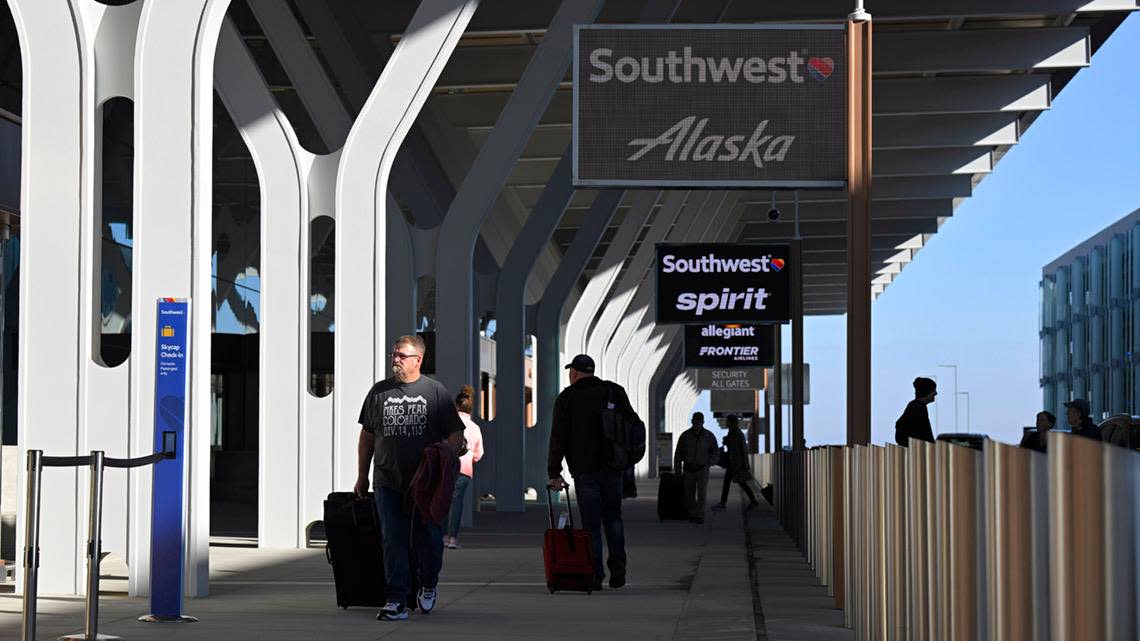New KCI Airport terminal is only the starting point for Kansas City’s transit future | Opinion

The opening of the new Kansas City International Airport terminal (and art gallery), is more than just a reason to brag about being up to date. It’s also a chance to focus on a comprehensive, rational transportation strategy that meets the entire area’s needs for decades to come.
Creating transportation options for 2 million-plus people spread over two states and many counties and cities isn’t easy. But regional structures and procedures exist both to help with planning and to prevent public dollars from being wasted.
Not only do various local governments have staff and resources to help people travel through and within our metropolitan area in ways that make sense, but the entire region is connected to the Mid-America Regional Council’s “Connected KC 2050” initiative, adopted in 2020 to make sure all aspects of transportation across our area make sense. KC 2050 is just starting an update process. The public can — and should — follow that through MARC’s website at marc.org.
It’s important to remember that, as MARC’s Director of Transportation and Environment Ron Achelpohl notes, Connected KC 2050 “doesn’t compel anyone to do anything.” Rather, MARC serves in an advisory, planning and connection role for its local government members. MARC’s primary job, then, is to recommend after consultation, but not to implement programs. That’s up to the cities and counties that make up MARC.
But citizens who have transportation needs and recommendations can follow the Connect KC 2050 update process and communicate with their elected officials.
The important thing for all of us to remember is that transportation needs and desires can change often and quickly. When the now-closed three-building terminal at KCI opened in 1972, for instance, it wasn’t clear that soon it would need big security changes because of unforeseen hijackings, terrorism and other safety concerns.
So we need transportation that responds with agility to crises and a changing travel environment. For instance, when the COVID-19 pandemic hit, ridership on the downtown KC Streetcar dropped dramatically. But it’s building back now, from about 785,500 in 2020 to 1.06 million in 2021 to 1.53 million last year. Our transportation systems must be able to survive such disasters.
Shift to electric vehicles, batteries
Another big change facing us is the shift from gasoline-powered to electric automobiles, coupled with a growing need for well-located charging stations. Related to that, the under-construction Panasonic battery plant in De Soto will have employees who need reasonable, efficient transportation to get to work from various locations.
All of that is happening where, as MARC’s Achelpohl puts it, “we’ve spent the last 50 years building out a car-focused region.” He notes, however, that in recent years there’s been more growth within the Interstate 435 loop as well as an increasing emphasis on such ecologically friendly alternative transportation methods as bicycles. And, he says, more bike lanes, sidewalks and trails are coming.
The streetcar extension from Union Station to the edge of the University of Missouri-Kansas City campus is another example of how our local travel options continue to change. And so is the decision to make Ride KC buses fare-free.
But all that needs coordination. The goal for the region should be to make sure the planning gives everyone a voice in the process so Kansas City can move closer to an environmentally friendly system that meets the needs not just of people who can afford to zip to work in private helicopters, but also of our neighbors who are dependent on reliable public transit.
Finances must be open and transparent
As for the size of the upcoming area transportation needs, Connected KC 2050 says it’s already identified more than $52 billion in anticipated revenues and expenditures, as well as $7 billion more in unfunded needs through 2050 — figures that may change in the coming update. In this process, the public voice must be heard before final decisions are made and not a penny should be wasted — especially not with legal disputes over charges of financial shenanigans of the kind that plagued the new KCI terminal.
Across Kansas City’s history, transportation has played a huge role, perhaps starting with French fur traders who arrived by the Missouri River to invade land occupied by Indigenous peoples. There’s also a good argument to be made that the 1869 opening of the Hannibal Bridge across the Missouri River set the stage for Kansas City — not Leavenworth or St. Joseph — to become the major city in this region and the gateway to lands in the West.
The now-defunct Trans World Airlines, which began in Kansas City in 1929, helped make this a regional and national transportation center, as did the rail and truck lines that served the Kansas City stockyards, which opened in 1871. The development of the intermodal rail-truck hub at the former Richards-Gebaur Air Force Base on the south edge of the metro is continuing that role.
In more recent times, debate about transportation has included the racially charged question of why the new streetcar line (the original streetcar line began in 1869 with cars pulled by horses) runs only north and south, not allowing predominantly Black residents of the East Side direct access to it. U.S. Rep. Emanuel Cleaver, in fact, famously derided the streetcar as “touristy frou-frou” when he was in the mayor’s office mostly for that reason.
Kansas City can’t afford frou-frou of any kind in its future transportation systems. Citizens and public officials should work together on a transportation future that works for everyone.
